Destiny + Amnesia = D E S T I N E S I A
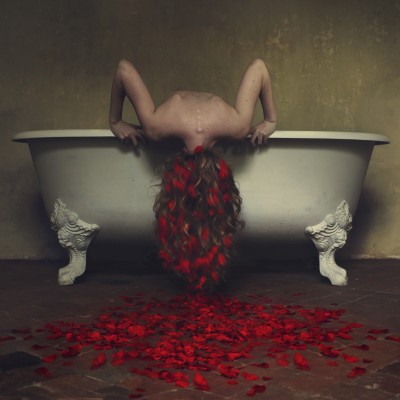

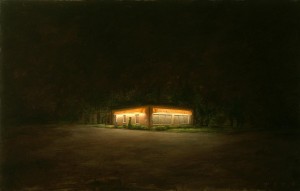
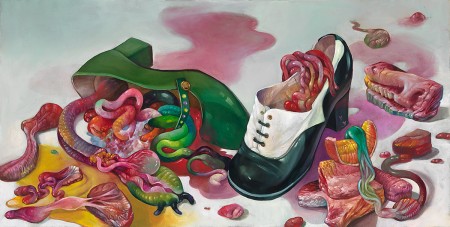
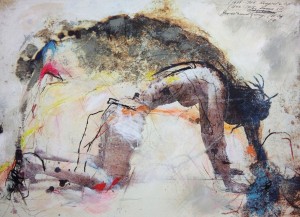
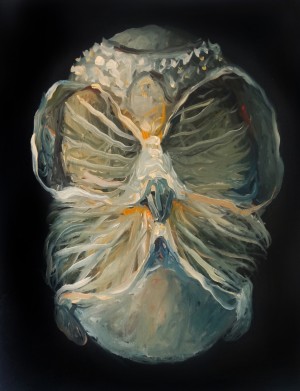
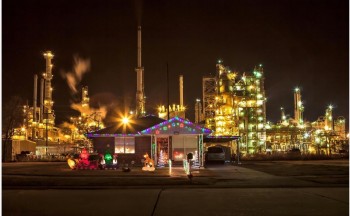
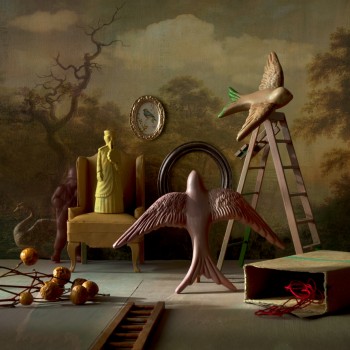
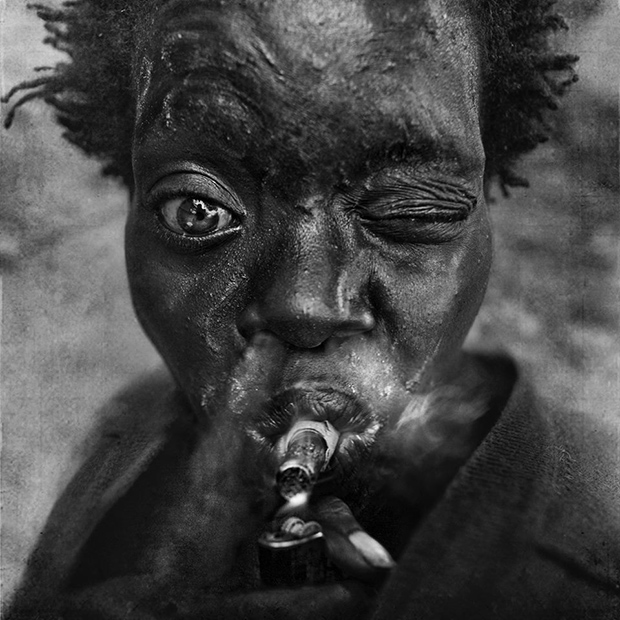
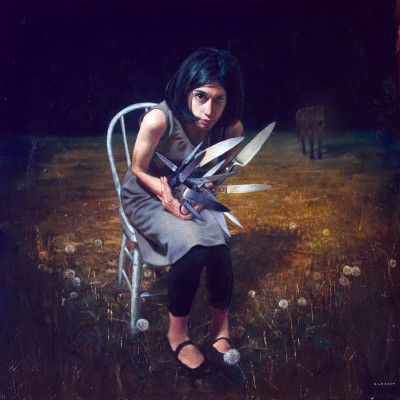
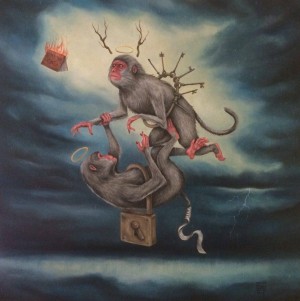
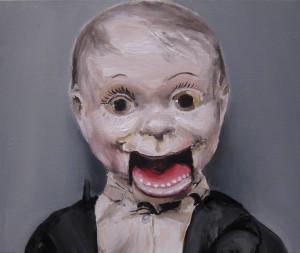
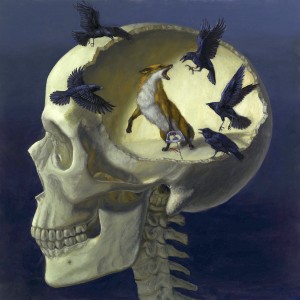
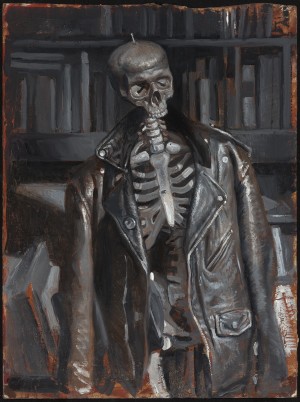
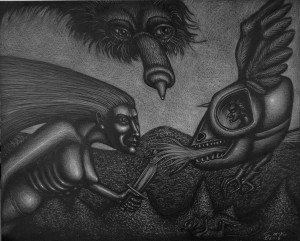
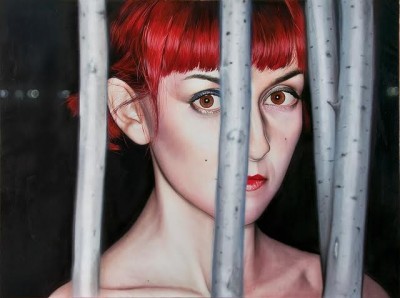
Curatorial Statement
By DH Dowling
Curator, Destinesia at Stephen Romano Gallery, NYC
- Destinesia
There is a realm that is known to artists. It is a realm where night is luminous. Where forgetting is powerful. A place where all must lose their way—
Destiny + Amnesia = Destinesia.
We lose ourselves to find ourselves.
We peer through a lens; commit brush to canvas; juxtapose images–here the work is fierce and exuberant. We extend the boundaries of self. We stare down oblivion.
Destinesia is a hypnagogic state, bordering on sleep, rich in theta waves, where dreams and reality mix. Here, we make contact with the creative spirit and converse with the elusive muse. Here, we find the courage to create.
Destinesia is the realm of daydreams. Here, we let go. Shatter the routine. Question. Spark. Illuminate. Answer. Here, we have epiphanies. Lose our self-consciousness. Risk it all. Here, everything breaks apart and snaps together. Here, we delve in the dark. Here, we light-up like neon. Here, we are in love with anarchy. Here, we are free.
In Destinesia, we forget to remember. What is created lives forever. The mystery is deepened.
Art makes us see.
- The Exhibit
From the hauntingly beautiful to the vividly voyeuristic, Destinesia delivers a powerful collective transcendence.
Assembled here for the first time, 33 trailblazing artists—from Spain, Poland, Italy, Germany, Sweden, Montreal, England and the US—unmask the world we really live in.
This is an unprecedented group of amazing artists. They are abstract expressionists, surrealists, minimalists, hyperrealists, representationalists, illustrators, collagists, sculptors, poets.
The work is analog and digital; spiritual and secular. They use oil on canvas, colored pencil, acrylic on panel, scissors, ink, marker, spray paint, found objects, bristle brushes, palette knives, graphite & mixed media on card, computers, image sensors, film, silver nitrate, Polaroids, words, conté crayon, silverpoint, aluminum leaf, paint on reclaimed wood with historic nails.
We are not where we thought we were.
Cross the threshold of dreams with us.
- The Curator
I grew-up in a perilously small house in the suburbs of Boston, Massachusetts. My father was a color blind painter and misanthrope by genetic predisposition. He could not afford an art studio, so he worked in the kitchen of our single family Cape every night after work. He set up his easel in front of the camera-shy stove and committed brush to canvas, listening to Bartok or Prokofiev, exhaling sweet-smelling smoke through his nose, teeth clamped hard on the stem of his pipe like a man biting a bullet to endure unthinkable pain. He drank regional beer until he could see the future. He taught me to observe the world around me with a thinking eye, and I developed a deep and abiding respect for artists.
“Art Makes Us See†is paraphrased from Paul Klee’s quote, “Art does not reproduce what we see; rather, it makes us see.†My father introduced me to Klee’s book, “The Thinking Eye,†at an early age. Klee’s shuddering forms, supernatural hieroglyphs, and sensuous creatures had a great influence on me as a young man, quickly followed by Max Ernst and Giorgio De Chirico. These were my superheroes. They had superhuman sight. They could see through me. Through life. Through death. They saw me through adolescence into adulthood. They taught me to be fully present with eyes wide open.
Art is a secret buried in the dark.
We drag it from the shadows to disturb the peace.
- The Artists
It is a privilege to present the unparalleled artists of Destinesia:
Stephen Cefalo
The stars were aligned for Brooklyn painter Stephen Cefalo—he was born in the hometown of Albrecht Dürer on Winslow Homer’s birthday. He paints exceptionally beautiful human figures rooted in classical tradition, informed with post-modern twists. Stephen has studied with Steven Assael, Max Ginsburg and Bonnie Sklarski. He has taught painting studies at the Art academy of Cincinnati, and was an Artist in Residence for the University of Arkansas at Little Rock’s Painting program.
Jeanette Marie Clough
Los Angeles poet Jeanette Marie Clough was an editor for Solo, A Journal of Poetry, and reviewed for Poetry International and Caesura. Her collection, Flourish, was a finalist in the Seismicity (Otis College of Art and Design) and Blue Lunx (Eastern Washington University) annual book competitions. Earlier collections include Island (Red Hen), Cantatas, and Celestial Burn. She is the author of two artist’s books, Stone and Tx, designed by Tania Baban and published by Conflux Press. During 2012, she was Artist in Residence in Joshua Tree National Park. Her poetry received awards in competitions for the Los Angeles Poetry Festival’s Fin de Millennium, Spillway’s Walt Whitman Call and Response, the dA Arts Center, and the Ruskin Art Club, and she is a three-time Pushcart Prize nominee. She also received First Place in the 7th Annual Clogh Poetry Competition in Ireland.
Robert Steven Connett
Los Angeles’ Robert Steven Connett creates gemlike universes. His intricate pieces are hauntingly complex, absorbing and cerebral. He takes his inspiration from biological forms—both flora and fauna, micro and macro, land and ocean dwelling—from which he generates new variations, as though he were painting with recombinant DNA. He is a masterful painter of other-worldly creatures harmoniously swimming in complex dreamscapes. Intricate geometric patterns make up each new species, meticulously depicted with illuminated detail.
Marsha De La O
Los Angeles poet Marsha De La O’s new book, Antidote for Night, won the 2015 Isabella Gardner Award and was published by BOA Editions. Her first book, Black Hope, received the New Issues Poetry Prize from the University of Western Michigan and an Editor’s Choice Award. Her work has been anthologized in Intimate Nature: The Bond Between Women and Animals (Ballantine), and Bear Flag Republic: Prose Poems from California (Greenhouse Review Press). She is the recipient of the 2014 Morton Marcus Poetry Award. She lives in Ventura, California, where she and her husband, Phil Taggart, edit the literary journal, Askew.
Julie Dermansky
Louisiana’s Julie Dermansky is a transdisciplinary artist whose work focuses on social injustice and on documenting society’s impact on the natural world. She uses Freedom of Information Act Requests as a painter uses a paint brush. She is a fearless boundary-pusher. She photographs arresting images that evoke a visceral response. Her work is moving, disturbing and human. There’s volatility, vulnerability and unpredictability in each wild image.
She has documented the 2010 BP spills in the Gulf of Mexico and other controversial developments including the Keystone XL pipeline and hydraulic fracturing. This series documenting the continued expansion of the fossil fuel industry serves as a “visual testimony that humanity is courting imminent disaster.†Julie is an affiliate scholar at the Rutgers University Center for the Study of Genocide and Human Rights. Her photographs have been published internationally, and her reports are published by The Atlantic, Al Jazeera, The Guardian, Truthout, and the Desmog Blog, among others. Her series “Fracking in the USA” was screened at the 2015 Visa pour l’Image, Perpignan’s International Festival of Photojournalism.
Joseba Eskubi
Spain’s Joseba Eskubi makes the unconscious conscious. He creates beautiful cyclones of pigment. His liberating abstractions place organic, amorphous shapes on a desolate stage. They are ambiguous and evocative, obsessive and absurd. Dynamism and austerity coexist on his canvases, each piece drawing the viewer into a fascinating vortex of conflicting meanings. His paintings are as sensuous as they are metaphysical. His powerful simplicity is complexity resolved.
David Fullarton
San Franciscan David Fullarton’s masterful mixed media collages are psychological sonatas with unflinching wit. The theme of each piece is powerfully anchored in the human condition. From his wry bio: “Because he is a man with very low expectations he is seldom disappointed and therefore lives a life filled with boundless joy. He has spent most of his somewhat checkered artistic career attempting to create a piece of artwork that doesn’t have words written on it. So far he has failed dismally. In his leisure time he enjoys a variety of smoked cheeses despite lingering doubts about their textures. Perhaps his most prized talent is his uncanny ability to stay out of the way.â€
Ian Gamache
Montreal artist Ian Gamache is driven by universal preoccupations. He explores subjective themes such as identity, isolation, anxiety, contamination and human cruelty. His highly charged subjects are often depicted with their subconscious thoughts and psychological traumas exposed and unearthed. By employing unorthodox materials such as torn cardboard, paper bags, record covers and used books, he creates paintings and drawings that reference contemporary society as well as personal experiences. His art works are infused with inner turmoil, violence, history and raw psychological experiences.
Karto Gimeno
Spanish photographer Karto Gimeno’s sublime images are metaphysical and theatrical abstracts orchestrating a palpable tension between the familiar and the surreal. He is a master of light. He creates radiant scenes frozen in time, like stills from a Fellini film. Each shot is spirit made palpable.
Mark Gleason
The raw emotional availability in San Franciscan Mark Gleason’s work astonishes, conjuring both a disquieting intimacy and an alluring sense of foreboding. Ultimately, Mark’s work expresses a powerful alienated majesty that bristles with tension.  From his bio: “I have a resonance with solitary places, particular animals and to the human figure. My painting is shaped by film and music, as well as by psychology, philosophy and literature.â€
Gregory Jacobsen
Chicago’s Gregory Jacobsen juggles joy and pain to produce disarmingly beautiful paintings that disturb the molecules. His intensely personal work strips down concepts to their naked core, leaving us with an unnerving, intoxicating tension between attraction and revulsion.
From his bio: “I paint figures, focusing on the little bits that obsess me…a little flab hanging over a waistband, ill-fitting shoes, overbites, noses, teeth, and flesh. Either through portraiture or busy tableaux, I create a world and vocabulary of characters that live and embrace their so-called faults. Over the years, this work has developed into piles that are corpulent and visceral stand-ins for characters. Meat, junk, pasties, and genital-like fruit and vegetables are constructed into heroic yet pathetic towers. These piles also act as a sort of forensic evidence and cataloging of awkward sex, gross gluttony, ridiculous masturbation rituals, and endless humiliation and failure. The work is absurd, grotesque, and a bit brutal, but I try to bring the viewer in with lush and glowing surfaces, creating a disorientating and hilarious balance of revulsion and attraction.â€
Lee Jeffries
England’s Lee Jeffries’ masterful street portraits have what George Condo called “the observations of the emotional content of human nature.†Lee is a cutting-edge artist and world-class storyteller.  From his bio: “His work is not photojournalism. Nor is it intended as portraiture. It’s spiritual iconography. Jeffries gives these people something more than personal dignity. He gives them a light in their eyes that depicts transcendence, a glimmer at the gates of Eden, so to speak. The clarity is awesome to behold. He infuses them with light, not darkness. Even the blind guy has light pouring from his sightless eyes. Jeffries intends his art to honor these people, not pity them. He honors them by giving their likenesses a greater meaning. He imbues them with the iconic soul of humanity.”
Clay Lipsky
Los Angeles’ Clay Lipsky is a fine art photographer and Emmy Award-winning graphic designer. A chameleon of visual styles, he is continually observing how the protagonist of man affects and is effected by the world around him. His photography has been published and exhibited internationally, most notably at the United Nations in Vienna & NYC, National Museum of Contemporary Art (Romania), Galerie le Carré d’Art (France), Lishui Photo Festival (China), Annenberg Space for Photography (USA), The Smithsonian’s National Atomic Testing Museum (USA) and with Esquire Russia.
Sarah Maclay
Los Angeles poet Sarah Maclay is the author of Music for the Black Room (2011), The White Bride (2008) and Whore (2004), all from U of Tampa Press, as well as three chapbooks. The “She†Series: A Venice Correspondence, her collaboration with Holaday Mason, is forthcoming in 2016. A 2015-2016 COLA Fellow and the recipient of a residency at Yaddo, her honors include a Pushcart Special Mention and the Tampa Review Prize for Poetry. Her poems and criticism have appeared in The American Poetry Review, The Writers’ Chronicle, FIELD, The Best American Erotic Poetry: Form 1800 to the Present, Ploughshares, Poetry International, where she served for more than a decade as Book Review Editor, and many other spots. A native of Montana and a graduate of Oberlin College and VCFA, she lives in Venice, California, teaches poetry and creative writing at LMU, and conducts Mini-Master Classes at Beyond Baroque.
Holaday Mason
Los Angeles poet Holaday Mason is the author of The Red Bowl, A Fable in Poems by Red Hen Press 016, Towards the Forest, 2007 and Dissolve, 2011 (New River Press) & two chapbooks (1999, 2002). The “She†Series: A Venice Correspondence, a collaboration with Sarah Maclay, is forthcoming in What Books in the fall of 016. Twice a Pushcart nominee, publications include, Poetry International, American Literary Review, Pool, Smartish Pace, Runes, Colo, The River Styx, The Spoon River Review, and The Laurel Review. Co-editor of Echo 68, poetry editor of Mentalshoes.com, she is also a portrait and fine art photographer. Her first one-artist photography exhibit was in Venice, California 2016 with 17 images from her Mud/Urn & Fairytale Series. The Weaver’s Body was finalist and won honorable mention for 014 Dorset Prize & her chapbook, Transparency, was a finalist for the Snowbound 2015. She has been a psychotherapist in private practice since 1986 and she runs therapeutic writing workshops that involve guided imaginal journeys into the worlds within the worlds.
Tom McKee
Illinois’ Tom McKee is an astonishingly articulate storyteller. His visionary ink-and-prismacolor drawings are highly personal and intuitive self-examinations that suggest we harbor savage instincts and unspeakable secrets.
From his bio: “The evolution of my characters came from the interaction of humans and animals which represent the higher and lower nature of man. The animals are the more bestial side of man. Robotic and more personalized machines are a reference to man as creator. Man creates machines in his own image, full of their own shortcomings. Frequent reference to characters such bugs, rats and other vermin show the constant presence of corruption. Every cookie has a bug wing in it somewhere.â€
P54
Italy’s P54 works with a gritty literacy that deepens the mystery. His paintings eerily unmoor us from space and time. Franks says: “I was born in Parma in 1981, and studied graphic design at the Art Institute P.Toschi. I live and work in Parma, Italy as a graphic/illustrator in the fashion and communications industry. Symbolism and storytelling are a fundamental part of my work. My research focuses on the soul, and stories of loneliness and adversity of human or animal subjects, who are fighting against the clock that runs away and destroys.â€
“I have painted two pieces for the show—Life Wishes Me Dead and Perpetual Struggle. Life Wishes Me Dead is a travelogue. Destinesia is the final stop. A hard and complicated life is tattooed on her skin, and it has marked her deeply, into her soul. Life tries to kill us every day. The important thing is not to drown. Perpetual Struggle tells of the endless fight between good and evil, between confidence and despair, between yes and no, often at the core of the creative process. Such conflict is a whirlwind at the center of Destinesia.â€
Carol Prusa
Florida’s Carol Prusa creates strange and vitally beautiful work evoking ideas of origin, mysticism and sacredness. She makes quantum states observable.
From her bio: “Like the actor Richard Dreyfuss in Close Encounters of a Third Kind, I resolve to make the most rigorously articulated pile of mashed potatoes I can sublimate from the unfathomable. My recent work consists of fiberglass forms, acrylic circles, acrylic hemispheres and spheres ranging from bowl-sized to five feet in diameter, articulated with silverpoint drawing and ground graphite washes heightened with white, often punctuated by patterns of light (from fiber optics, internal programmed lights, video, or reflections on aluminum leaf).â€
Victor Rodriguez
Mexico City-born painter Victor Rodriguez transfers flying quantum bits every time his brush touches a canvas. His work has a higher-order awareness, immersive, slippery and tinged with myth and menace. These large-format paintings are visceral, intimate and cinematic. He creates in a realm of powerful magic realism. He has lived and worked in NYC since 1996, and exhibited worldwide since 1990. Recently ranked #44 “Best Painter in Brooklyn” and #265-trillionth “Sexiest Man Alive” by People Magazine.
Brooke Shaden
They say awe is dead. Not when I look at the work of Los Angeles’ Brooke Shaden. Each sensuous image is a luminous and tantalizing aphrodisiac that shakes the psyche and resonates deeply. Her photographs are intrinsically cinematic, complete with character, tension, and lush visual literacy.
At 24, Brooke was the youngest artist in the “Digital Darkroom†exhibit at the Annenberg Space for Photography. She is the author of “Inspiration in Photography: Training your Mind to Make Great Art a Habit†published in 2013 by Focal Press. In 2011, Shaden’s image “Running from Wind” was one of eight photographs chosen out of approximately 100,000 entries by Hollywood director Ron Howard as inspiration for the film Imagin8ion. Shaden is a motivational speaker and founder of the conference “Promoting Passion†which seeks promoting creativity and passion in others. She is also the founder of a school of photography in Kolkata, India for survivors of human trafficking.
Alessandro Sicioldr
Alessandro Sicioldr is an Italian painter of depth and vision. Each of his pieces is an epiphany that summons spiritual inquiry and pierces the veil of consciousness. Alessandro wields an incendiary pencil.
From his bio: “Sicioldr is an unusual word, it has a hissing, raw and allusive sound. It revealed itself mysteriously to my consciousness a few years ago and now, fortunately, it has become a part of my life. I do not remember the exact moment when it revealed itself, nor its sensory origin (auditory, visual?). The only thing I am sure of is that it belongs to the same world that I depict in my works. I know only two words of this otherworldly dimension, one is Sicioldr, the other one is secret and I have only mentioned it a few times in my life. The first time I heard the secret word it was in a childhood nightmare. I hid inside my house from a mysterious, dark presence. The story of Sicioldr in the world of creativity is a journey of exploration and introspection, a Dantesco journey where mythical figures mingle with bodies infused with enigmas, sibylline gazes of hermaphrodite figures, endless deserts, plant and animal kingdoms interwoven in unspeakable forests, labyrinths, mists, mysterious idols, eclipses, metamorphosis are what I see when I open “The Eye”: “Oculatus Abis.”
Linnea Strid
Sweden’s Linnea Strid creates rivetingly realistic portraits with a tactile elegance. Her paintings are intricate observations of the human figure. Each sensuous face displays a tenderness and despair that echoes common roots of being and existence. The artist transforms water into mystic experience. The mix is dramatic, erotic and intoxicating.
Fred Stonehouse
Wisconsin’s Fred Stonehouse’s paintings lure us with their conceptual beauty. Tears. Masks. Mists. Compelling word fragments. Fusing the diabolical with the spiritual, each piece is a crucible of vision that masterfully shapes the shapeless contents of Stonehouse’s unconscious. This is graceful and intimate storytelling with impressive depth.
From his bio: “Stonehouse populates his canvases with mythical creatures, religious symbolism, and biographical anecdotes. His painted cast of characters are often based on members of his family; his narratives drawn from lived experience. Borrowing imagery from sources as diverse as rural hunting culture and vintage circus banners, his more recent works are inhabited by creatures lurking around marshlands and deep woods similar to those in Wisconsin. Rife with satire and despair, his painted worlds are at once fantastical dreamscapes and prescient explorations of the human experience and its attendant charms and disillusions.â€
Jaya Su Su
Germany’s Jaya Su Su’s photographs strike a darkly enigmatic, mystical tone with an intimacy, maturity and perception. She sees what most don’t.
From her bio: “Since an early age I soaked up everything – brought everything into focus with my camera. Initially I worked the photographs and other materials into a collage diary; especially when life was hurting. But at some stage I had to transgress beyond the limits of the book cover, develop something greater. The elaborate, surreal collages reflected my feelings: impulsive, intense and imaginative. The photo shoots kept increasing – spontaneous or by appointment. Attractive people, mostly women and the wondrous encounters in the game with the camera became expressions of my mixed media works. The increasing ease of access to digital resources was my revelation: I tattooed the beautiful creatures with my own language, applied shades of desire and sketched injuries onto face and body. After years of experimentation and study, I’ve found my means of expression: I combine my photography with painting, drawing, digital collage and mixed media.â€
A.W. Sommers
Brooklyn-based A.W. Sommers paints organic collisions with the fury of mystical revelation. She chases dreams until they begin to unravel.
From her bio: “I practice art in the way a tinkerer, or a philosopher-alchemist, approaches his workshop: all avenues are considered, objects and drawings continually evolve, and, most importantly, there is constant motion, fingers are always fiddling, marks are always being made. For me, art is a verb. I am an inveterate magpie: images, histories, phrases, shiny bits, trash, old papers, hair trimmings, rusty things, bones, and dust all find their way into my studio to be considered, mulled about, chewed upon, and channeled into new work. As a result, my work is manifold: I make paintings, drawings, books, sculptures, miniatures, and assemblages. I slip tiny paintings into matchboxes and draw on bones. All pathways of making are fair game.â€
Alexandra Urban
Poland’s Alexandra Urban is a provocative and daring painter whose sexually-charged canvases evoke an intimate exploration of her core personality—she is innately brave and utterly fascinating.
From her bio: “Urban’s paintings are visceral journeys into deeply personal memories and fantasies where reality takes on the uncanny aspects of a dream – even a nightmare. There is an air of guilt and suspicion that pervades her works, as if they were documents of an ongoing investigation – whether it is one of the past or the immediate present.â€
Born in 1978, the Wroclaw-based artist got her education at the city’s Academy of Fine Arts. Over the past several years, she has garnered attention on the contemporary art scene in Poland and throughout Europe, exhibiting at such prestigious events and venues as the Edinburgh Art Festival, BWA Studio in Wroclaw, Art Agenda Nova Bestregards Gallery in Frankfurt, and even Brazil’s A Gentil Carioca w Rio de Janeiro.
CW Wells
Pennsylvania’s CW Wells places us directly into her raw and brutal nightmares so successfully that each piece bristles with an organic sense of surrealist disbelief. She has long held a legendary presence on the internet under the pseudonym Snailbooty. Her fans are legion.
From her bio: “Philadelphia-based artist CW Wells recycles and repurposes doll parts and discarded action figures, mixing in scale figure accessories and her own ceramic creations, assembling her constructions into enigmatic dreamscapes. The effect recalls the broken toy figurines in the films of Jan Svankmajer or the Brothers Quay. Carefully lit and photographed, the damaged characters that populate Wells’ tabletop tableaus seem to pose with the same wounded solemnity as subjects in a Diane Arbus photograph. Her work is at once disturbing and darkly humorous. The impressive breadth of her work can be seen in her massive “Snailbooty†Flickr gallery, where every image surprises and defies you to decode its secrets.â€
Heather Wilcoxon
San Franciscan Heather Wilcoxon’s powerfully lyrical work masterfully challenges the aesthetic reflex. She states, “Always challenge yourself. Take risks. Don’t be afraid of change. Fail. A lot. Nothing comes easy. It’s the work that matters.â€
Wilcoxon received her MFA from the San Francisco Art Institute in 1988. She has exhibited both nationally and internationally. Her work is in several permanent collections including The American University Museum, Washington DC, The Fine Arts Museum, Auchenbach Foundation of Graphic Arts in San Francisco, the De Saisset Museum and Triton Museum in Santa Clara and the Di Rosa Preserve in Napa, California. She has received several fellowship awards. Two from the Pollock/ Krasner Foundation, New York. Three painting grants from the Buck Foundation in Marin County and a residency fellowship from the Djerassi Artist Residency Program and The Stonehouse Artist Program in California. She is also been nominated 3 times for a SECA from SFMOMA, as well as 2 nominations from the Eureka Fellowship Program.
Dan Witz
Brooklyn’s Dan Witz is a hyperrealist painter and one of the pioneers of the street art movement. His two cityscapes in Destinesia resonate with a profound solitude and introspection recalling the legendary American realist painter Edward Hopper. Witz’s vibrant heightening of color transforms each canvas into a grim mirror of the urban world where loneliness is a soul-shattering dissonance.
Witz’s paintings have been shown in galleries throughout the US and Europe. He has received a National Endowment of the Arts grant and fellowships from the New York Foundation of the Arts, in 1992 and 2000. His published books include The Birds of Manhattan (Skinny Books), In Plain View and Hummingbirds (Gingko Press). His work has appeared in Juxtapoz, Time, Arts Magazine, New York Magazine, Public Art Review, The New York Times, The Daily News, Newsday, The New Yorker, Harpers, and Adbusters. Dan was an early and frequent contributor to the definitive street art website and blog, the Wooster Collective. Dan’s work can also be seen in the 2010 Banksy film, Exit Through the Gift Shop.
Sandra Yagi
San Francisco-based artist Sandra Yagi paints fantastic incongruities that jolt the consciousness. She is a diligent student of science and nature fused with classical aesthetics. Yagi’s two astonishing “cutaway skull†paintings in the show explore myth and symbolism associated with “our basic human drives and the thin veneer of humanity overlaying our animal nature.â€
Sandy says, “Science, zoology, human folly and an obsessive curiosity for the macabre provide the fuel for my subject matter. My work is inspired by the natural sciences as well as by the traditional drawing and painting techniques of the old masters, including anatomical studies by artists such as Andreas Vesalius and Bernhard Siegfried Albinus. My recent paintings incorporate anatomical imagery to explore the human psychological condition and humanity’s effect on the natural world. Conjoined twin skeletons contrast figures with a natural deformity undertaking great feats of athleticism and grace. Hybrid creatures result from the use of art and fantasy to play with the principles of genetics and evolution.â€
Santiago Ydañez
Spain’s Santiago Ydañez creates deeply beautiful inquiries into the ubiquity of good and evil. He paints mysteries wrapped in dreams illuminated by nightmares.
From his bio: “My imagination is populated by living and dissected animals, landscapes and children, and is currently being enriched with some portraits of my influences from art history and literature. With great reverence and joy, I have painted Grosz, Beckmann, Otto Dix, Thomas Mann and some other people as a love letter to art, but also full of sorrow for the great flaw in the society of that time: non-resistance. Bergman in “The Serpent’s Egg†and Haneke’s in “The White Ribbon†illustrate very well how close hell is to paradise. Bergman shows how society in Berlin of the 20s began to darken to an eternal winter. Haneke takes us back a further generation and analyzes the society that brought forth the incomprehensible. This society of “good thinking†in the 19th Century gives me a number sweet motifs full of idyllic images, landscapes, poems about love and hate, an Arcadian orgy. For inspiration, I have taken books on poetry and love from the 19th century and “polluted†or “enriched†them: a beautiful package for “noble†content. The same happens to the frames, which are the cradle or the loudspeaker of dirty and blessed painting. The overstraining of paradise and the metaphor of untouched, fresh-fallen snow – that infinite and antiquated white – lend this exhibition its title.â€
Santiago Ydañez was born in Jaén, 1967. Lives and works in BerlÃn and Granada (Spain). Graduated in Painting from the School of Arts of Universidad of Granada, Ydañez is one of the most internationally recognized Spanish artists of his generation. Santiago Ydañez was awarded the Premio de Pintura ABC in 2002, Premio de Pintura Generación 2002 – Caja Madrid, Beca del Colegio de España in ParÃs – Ministerio de Cultura in 2001 and the Beca de la Fundación Marcelino BotÃn in 1998. Ydañez work is represented in several Institutional Art collections such as: Fundación BotÃn (Santander), Museo Nacional Centro de Arte Reina SofÃa (Madrid), Museo SofÃa Imber Caracas, Venezuela. (Dillon gallery press release)
Sarah Zar
Brooklyn’s Sarah Zar creates mythic and nostalgic otherworlds of juxtaposed dream fragments culled from far-flung memories. They have an intoxicating immediacy and veracity. Zar’s humanity infuses every brushstroke and historic nail.
From her bio: “Sarah Zar is a northern-dwelling, migratory bird. It traditionally creates novels by painting. This particular Zar has a collection of imaginary avians that enjoy flying around her neck when the winds are rising. Her species is noted for its colorful use of dream logic.â€
Adam Carnes
Brooklyn’s Adam Carnes is a star on the rise. An emerging artist. His beautiful neo-expressionist abstracts fracture time and space.
Of his work he says, “My paintings are about transitions, transfiguration. The constant flux of mortality, the inevitable unknown.†Adam has opened the door to Destinesia.
- The Inspiration
The artists of Destinesia have big ideas—the red petals falling in Brooke Shaden’s “Petals from My Roots,†the Scottish accoutrements in Gregory Jacobsen’s “Ding-Dong,†the winged creature in Alessandro Sicioldr’s “Ombra,†the hyper-sexualized red mushroom in Alexandra Urban’s “Muchamor,†the ravenous blue eyes in A.W. Sommers’ “The Constant Drumbeat of Terrible News,†the silver-tinted cyclone in Carol Prusa’s “Swallow,†the blithe tourists watching an A-bomb explode in Clay Lipsky’s “Atomic Overlook 01,†the three dolls descending in size in CW Wells’ “Dum Dum Dum.â€
The building lit from within against darkness of Dan Witz’s “Liquor Store,†the articulate intellect behind David Fullarton’s statement: “By the time we had all the answers, we had forgotten what the questions were,†the hunter who shoots his own car in Sarah Zar’s “Abstract Hunter,†the blood-red, tear-shaped beads of perspiration in Fred Stonehouse’s “Lies of Language,†the joyous chaotic heads of Heather Wilcoxon’s “Head Space,†the hat made of sad faces in Ian Gamache’s “Hat,†the head dragging a spine in Jaya Su Su’s “Levitara.â€
The haunted eyes in Joseba Eskubi’s three untitled paintings, the small house decorated with Christmas lights in front of the massive oil refinery in Julie Dermansky’s “Christmas Scene in Louisiana,†the pure theatrical romance in Karto Gimeno’s two photographs, the brilliant direction and courage of subjects in Lee Jeffries’ two photographs, the longing eyes, vivid purple grass and ghostly trees in Linnea Strid’s “Where Dreams Go to Sleep,†the fighting monkeys tumbling through space in P54’s “Perpetual Struggle.â€
The woman sprouting knives in Mark Gleason’s “Emily,†the metallic winged creature in Robert Steven Connett’s “Planktonauts IV,†the fox fighting off crows in Sandy Yagi’s cutaway skull, the dislocated puppet mouths and painted eyelashes of Santiago Ydañez’ two doll paintings, the naked mysticism of Stephen Cefalo’s work for the show, the human-piloted chicken vehicle breathing fire in “Chicken of the Hills†by Tom McKee, and the mysteriously moving Godhead of “DancingGodComplex†by Victor Rodriguez. I am drawn toward these flames. These ideas bond Destinesia.
I have a favorite quote about the creative process:
“The blood jet is poetry and there is no stopping it.â€
                                                                                                 Sylvia Plath
—DH Dowling, Curator, Destinesia, Stephen Romano Gallery

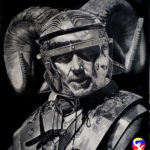
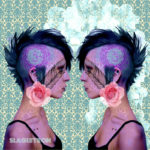
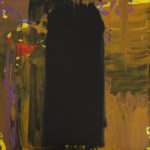
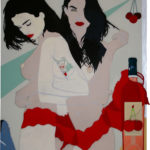
3 COMMENTS
Jane E
10/30/2020I have read so many articles this
paragraph is in fact a fastidious post, keep it up.
Barbara Atyson
06/24/2020Hi,
Her work is beautiful, good post!
Claudia Clement
06/19/2020Hi, This is really interesting art.
Kind Regards,
Claudia